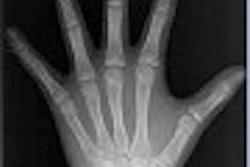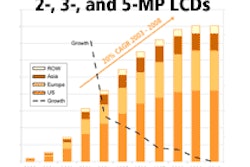MIAMI BEACH, FL - CT angiography (CTA) is preferable to MR angiography (MRA) for diagnosing patients with suspected peripheral vascular abnormalities, according to a presentation Tuesday at the International Symposium on Endovascular Therapy (ISET) meeting.
"CT angiography is a great first-time technique for doing these studies," said Dr. Bart Dolmatch, professor of radiology at the University of Texas Southwestern Medical Center in Dallas. CTA requires less setup time, so that a patient can be prepped and successfully imaged in as little as 10 minutes, he said. On the other hand, MRA might take as long as an hour.
"This is very meaningful for the patients," he added. Dolmatch recounted one incident at his institution in which an elderly woman was undergoing MRA for suspected pelvic and leg vascular problems. "She had already been on the table for 20 minutes when I arrived to observe the procedure," he explained.
Another 20 minutes elapsed while further settings were made. As much as the woman tried to comply, she simply could not hold her position and began to move around, which required additional setup procedures. Dolmatch said he then had the woman transferred to an available CT room, where CTA studies were performed in 10 minutes.
Dolmatch pointed out that while both MRA and CTA images would have sufficed for a diagnosis, in this case the need for a speedier exam made CTA the better choice.
He outlined other benefits of relying on CTA for peripheral vascular abnormalities:
- CTA images can be obtained from "mandible to the knees" in one dataset, while MRA requires separate components for one study.
- Images can be manipulated in numerous ways with computer software. At his institution, a Vitrea 2 workstation (Vital Images, Plymouth, MN) is used.
- CTA can pick up unexpected findings such as infections or tumors that might not be seen on MRA.
CTA does have its pitfalls, Dolmatch acknowledged. Such detailed exams require that the radiologist spend considerably more time reviewing the scans for abnormalities -- even if that abnormality has nothing to do with the suspected clinical problem.
In addition, CTA is simply unsuitable for some patients, such as those with documented renal impairment, or those who are likely to have an allergic reaction to the iodine-based contrast medium. In these cases, gadolinium-based MRA is preferable. And, of course, the MRA exam is radiation-free.
Patients with advanced diabetes and evidence of calcifications that indicate kidney function risk would be candidates for MRA angiography rather than CTA, Dolmatch said.
By Edward Susman
AuntMinnie.com contributing writer
January 19, 2005
Related Reading
Multidetector CT angiography identifies stable carotid plaques, January 12, 2005
3D contrast MRA may be optimal for evaluating aortic dissection, December 30, 2004
High noncardiac yield mandates rad involvement in CTA, November 11, 2004
CTA serves as sole pre-op imaging for AAA endograft patients, March 30, 2003
Copyright © 2005 AuntMinnie.com



















